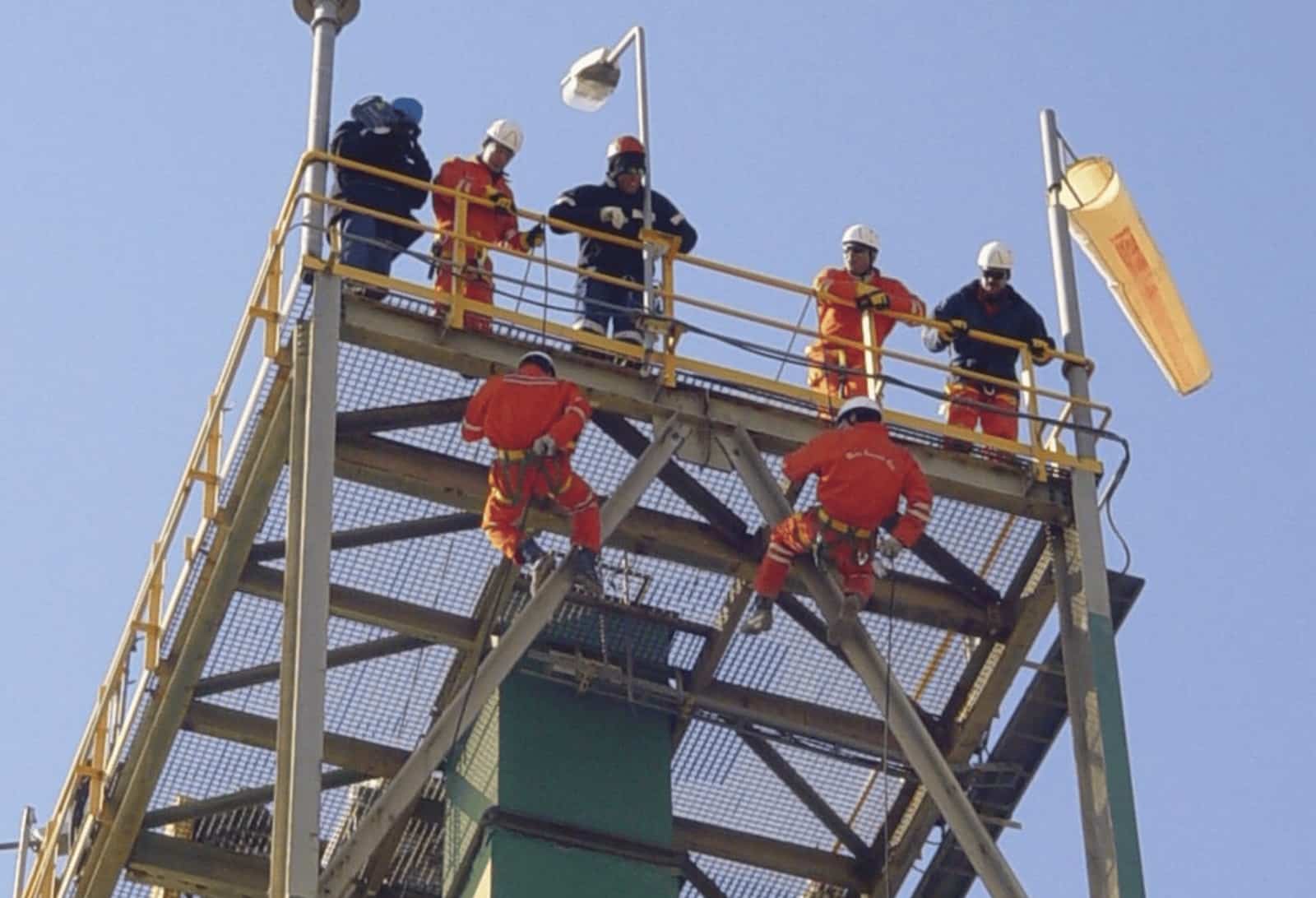Working Safely At Heights
Safe work at heights requires careful implementation of appropriate equipment, training, and safety measures to prevent the risks of falling.

To prevent fatal falls, it’s essential to design facilities that allow for safe work at heights, upgrade existing structures for safety, provide industry-specific equipment, and ensure the competency of personnel working at height.
Safe work at heights is achieved by defining industry- and job-specific design and equipment parameters. We focus on teaching employees safe climbing techniques, working at heights, and fall rescue skills either at the workplace or through practical sessions.
Our Services

Working Safely at Heights Consulting

Safe Work at Heights Training

Fall Rescue Training
Frequently Asked Questions
Why is design important for safe working at heights?
Ensuring that facilities are designed for safe operations minimizes risks and prevents accidents. A well-planned design provides appropriate equipment and space tailored to job requirements.
Why is personnel competency important?
Workers at height must receive adequate training to recognize and prevent hazards. Proper training enhances workplace safety and significantly reduces accident risks.
Why should rescue skills from heights be taught?
In the event of an accident, quick and safe rescue procedures can prevent severe injuries and fatalities. Training ensures that workers are prepared for emergency situations.
How should industry-specific equipment be selected?
Equipment should be chosen based on the risks of the industry and the specific job requirements. Properly selected gear maximizes safety and effectiveness.
Why is working safely at heights training important?
Working safely at heights training is critical to prevent falls, which are one of the leading causes of workplace injuries and fatalities. This training ensures employees understand how to use the right equipment, follow safe practices, and recognize potential hazards when working at height, significantly reducing the risk of accidents.
Who needs to take working safely at heights training?
Any employee who works at height, whether it's for maintenance, construction, or other tasks, should undergo working safely at heights training. This includes workers who operate ladders, scaffolding, or aerial work platforms. Ensuring all personnel are trained enhances workplace safety and compliance with safety regulations.
What does working safely at heights training include?
This training covers key topics such as fall protection equipment, safe climbing techniques, proper use of ladders and scaffolding, and emergency procedures. It also teaches employees how to assess and manage the risks associated with working at height, ensuring that safety protocols are followed effectively.
How does working safely at heights training reduce workplace accidents?
By providing employees with the necessary knowledge and skills, working safely at heights training helps prevent falls and other accidents. The training emphasizes the correct use of safety equipment, awareness of hazards, and safe working techniques, ensuring employees can perform their tasks safely and efficiently.